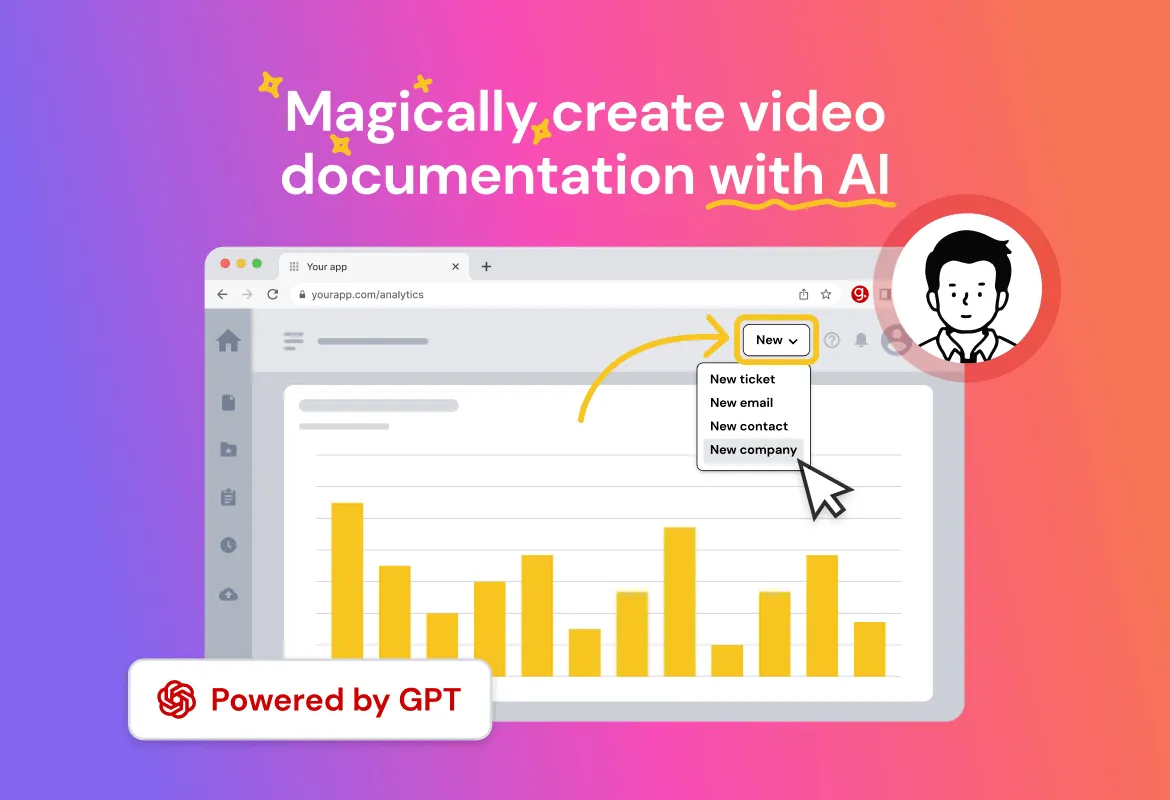Why Building Customer Centricity Matters for Businesses
Thrive in today's competitive market by ditching flashy tactics and embracing customer-centric culture that prioritizes personalization and data-driven decisions.
Published February 22, 2024.

In today's hyper-competitive market, businesses constantly struggle—to attract new clients and retain existing ones. According to a report from Meteor Space, 86% of consumers leave a brand after just two poor customer service experiences.
While marketing campaigns and flashy products may grab attention, the real difference-maker lies in something less glamorous yet far more powerful: customer-centric culture.
What Is a Customer-Centric Culture?
A customer-centric culture is about friendly service and understanding your clients deeply. You should be able to anticipate their needs and tailor your business around them. In this environment, every decision—from product development to sales—involves creating a positive experience that resonates with your target audience.
» Try simple ideas to improve customer experience and boost satisfaction
Why Is It Important?
Customers drive revenue and shape your brand's reputation. They also influence future growth by advocating for your business. By prioritizing their needs and exceeding expectations, you unlock benefits such as:
1. Increased Customer Satisfaction
If your customers are happy, they become repeat buyers and loyal fans. They boost your bottom line through increased sales volume, higher average order value, and reduced customer acquisition. Plus, act as brand's advocates, recommending the product to friends and family.
2. Improved Marketing and Sales Effectiveness
You must understand your customers' preferred communication channels, product features, and purchase history. You can boost conversion rates through targeted email marketing or personalized social media ads.
3. Reduced Costs
Loyal customers need less marketing effort because they're already familiar with your brand, positively perceive your products, and are more likely to trust your messaging. It also leads to cost savings.
» Learn the secret to customer loyalty
4. Data-Driven Decision-Making
Customer data empowers you to make strategic decisions based on real-world evidence instead of intuition. It leads to effective marketing campaigns, efficient resource allocation, and better business strategy.
Building a Customer-Centric Organization
- Know your audience: With the customer's pain points in mind, you can develop products, services, or messaging that directly addresses their desires and solves their problems. This approach could involve adopting new features, improving existing ones, or creating marketing campaigns that resonate with them.
- Focus on the customer experience: Map their entire journey with your brand, identifying areas for improvement and implementing solutions to ensure a smooth customer experience at every touchpoint.
- Emphasize personalization: Leverage data and technology to personalize your communication, recommendations, and offerings, making customers feel valued and understood.
- Continuously collect feedback: Actively collect insights through surveys, social media, and direct communication, using it to refine your organization's customer-centric approach and adapt to changing needs.
- Empower your employees: Building a team that genuinely understands and fulfills customer needs is essential. Guidde can help you create high-quality training videos quickly and easily, directly from your browser. You'll eliminate expensive production crews and simplify the development.
How Businesses Thrive Through Customer-Centric Culture
Many companies have boosted their revenue by focusing on a customer-centric culture. For example, Amazon has a robust infrastructure for collecting client feedback. It includes product and seller reviews, surveys, social media mentions, and direct contact through various channels.
They actively encourage customers to share their opinions, both positive and negative. Amazon doesn't just collect feedback; they analyze it meticulously. Tools like machine learning and sentiment analysis help them understand customer pain points, preferences, and emerging trends.
On the other hand, Target leverages customer data to personalize shopping experiences, creating a win-win for customers and the company. It analyzes your past purchases, browsing behavior, and demographics to suggest relevant products. Instead of generic ads, it might recommend a new backpack based on your recent purchase of hiking boots.
Overcoming 5 Common Challenges
1. Resistance to Change
Resistance to new initiatives often stems from ingrained habits and closed-off thinking. To overcome this barrier and secure everyone's buy-in, foster open communication, transparent decisions, and inclusive participation.
2. Data Overload
Leveraging customer data for insights and personalization requires efficient collection, organization, and analysis. Simplifying management and promoting cross-team information sharing make overcoming this challenge easier.
3. Misaligned Objectives
Without a clear understanding of the target client base and resource allocation, customer-centric team goals can become misaligned, which reduces their effectiveness. You should define them and ensure the staff is on the same page.
4. Quick-Fix Mentality
Chasing short-term gains can derail your quest for building a sustainable, customer-centric organization. Patience and unwavering commitment to quality and long-term impact are essential for success.
5. Metrics and Feedback
Regularly measuring the impact of customer-centric teams and initiatives through clear metrics and gathering and analyzing client feedback allows continuous improvement and ensures alignment with strategic objectives.
Note: Regulations, diverse clientele, and complex service needs often stop progress in government, finance, healthcare, and education industries. But they can overcome these challenges by understanding the limitations, fostering trust and clarity, and finding creative solutions within existing structures.
» Discover the metrics that measure customer satisfaction and attract more clients
Embracing Customer-Driven Culture
Implementing customer-centric practices isn't a one-size-fits-all strategy. By overcoming challenges, embracing feedback, and adapting to evolving needs, you can ensure your business remains relevant and resonates deeply with those who matter most—your customers.
One of the ways to foster loyalty is through effective onboarding—and guidde can help you with that. It enables you to create informative and engaging training videos for your clients so they can better use your product, which boosts customer success.
